Training Day or Play Day? Why Not Both
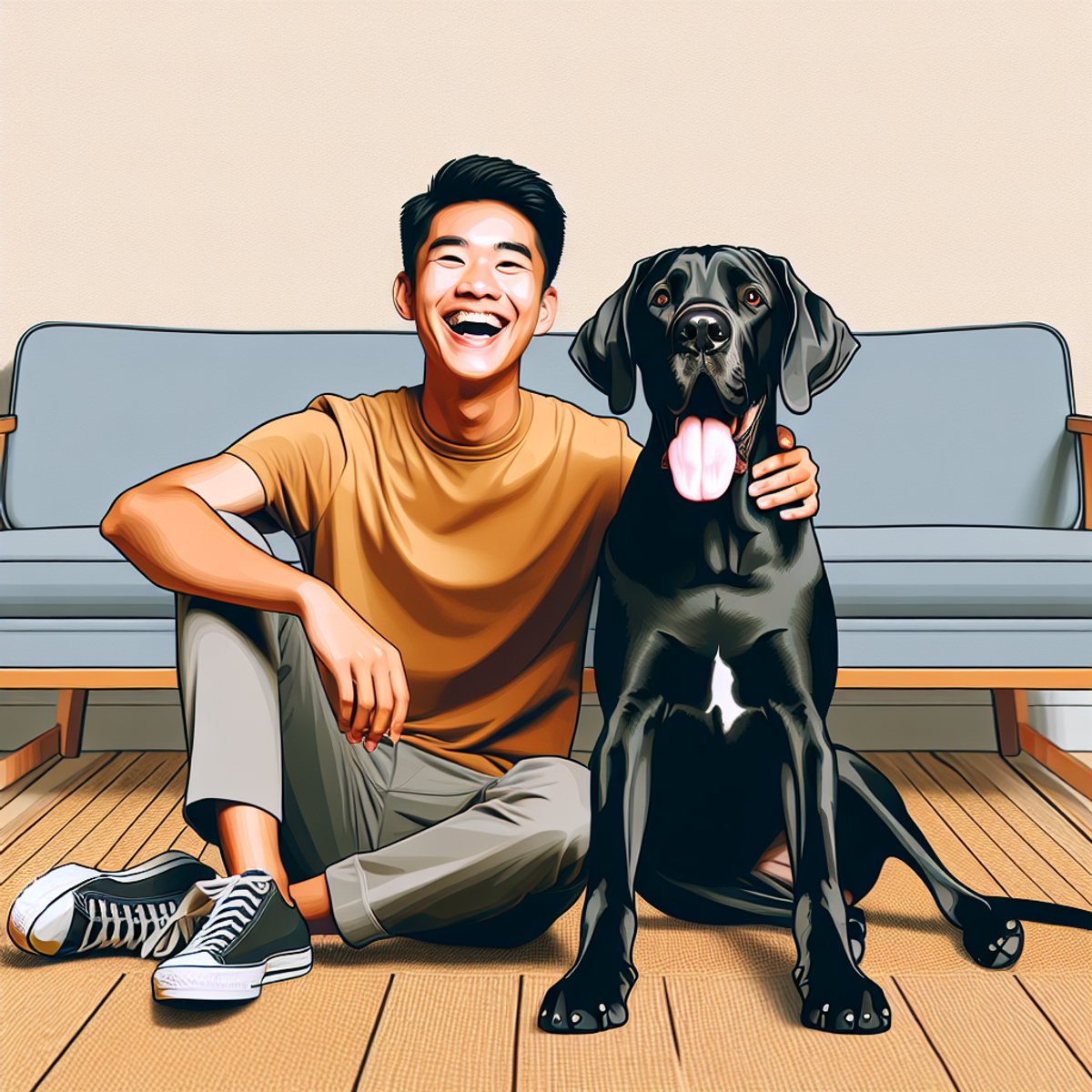
Great Dane & Training
Woof! Let me tell you about training from a Great Dane’s point of view – and trust me, I know what I’m talking about!
First off, us Great Danes are pretty chill dogs. We’re not trying to be difficult, but sometimes our humans forget we’re gentle horses pretending to be lap dogs. When teaching us, keep it short and sweet – 5-10 minutes max. Our attention spans aren’t super long, plus sitting for too long makes our giant legs go numb!
The basics like “sit,” “stay,” and “come” are pretty important. I’ll be honest, though – sometimes when my human says “come,” I pretend I don’t hear them because I’m comfortable on the couch. But throw in some tasty treats, and suddenly my hearing gets a lot better!
Speaking of exercise, we need about 30-60 minutes a day to burn off energy. Without it, we might accidentally knock over your coffee table with our tail helicopter or redecorate your garden. It’s not on purpose – we get excited!
Here’s a pro tip from us big guys: positive training with yummy treats works way better than yelling. We’re sensitive souls in massive bodies. And please start socializing us early! We need to learn that not everyone wants a 150-pound “puppy” jumping on them for hugs.
Oh, and leash training? Super important. Nobody wants to get dragged down the street by a dog the size of a small pony. Start somewhere quiet where we won’t get distracted by squirrels or interesting smells.
Remember, we Great Danes want to make you happy – we’re gentle giants who sometimes forget how big we are!
Exercise Requirements for Optimal Health and Behavior
I know, I know, you probably look at my giant paws and think I need to exercise like a crazy athlete, but that’s not my style.
Here’s the deal: I need about 30-60 minutes of moving around each day, but I like to spread it out. Maybe a nice walk in the morning, then some playtime later. Nothing too crazy! Swimming is pretty awesome because it doesn’t make my joints feel all creaky – plus, I look pretty majestic paddling around like a giant water dog. Regular exercise helps improve my cardiovascular health and keeps my immune system strong.
I need 30-60 minutes of exercise daily, but spread out – not all at once like some crazy athlete!
Now, here’s something super important – my brain needs exercise too! If I get bored, I might decide your favorite shoes look chewable. Trust me, nobody wants that. Give me some puzzle toys or teach me new tricks, and I’ll be the happiest giant you’ve ever seen. Engaging in mindful play is essential to keep my spirits high and prevent unwanted behaviors.
Oh, and please introduce me to other dogs and people when I’m little! It helps me learn how to be cool around everyone.
The thing is, I prefer having a regular schedule instead of doing extreme workouts. I’m a gentle giant who wants a predictable routine. Pretty easy to handle, right? You don’t need to be a super athlete to keep me happy!
Mastering Essential Obedience Commands
Hey there! It’s me, your friendly neighborhood Great Dane, and I’ve got some thoughts about this whole “obedience training” thing my humans keep talking about.
Look, I get it – I’m the size of a miniature horse, so when I get excited and jump on Aunt Martha, she tends to end up on the floor. Not my fault, she’s so tiny! I need to learn five magic words that make my humans super happy: sit, stay, come, down, and heel.
Here’s the deal, though – you humans need to get your act together first. Mom says “sit,” Dad says “sit down,” and little Jill points at the ground while making weird noises. Pick ONE command, people! I’m smart, but I’m not a mind reader. And those hand signals? Make sure everyone does the jazz hands the same way.
Now, about these training sessions – keep them short and sweet! Five to ten minutes is perfect because, honestly, my attention span is about as long as the time it takes me to spot a squirrel. I’d much rather have quick, fun lessons throughout the day than sit through some boring hour-long lecture. I’m not in college! Also, remember that early socialization is crucial for well-adjusted adult behavior.
Start training me inside where it’s just us. Once I’ve got the hang of things, then we can try it outside where there are a million fascinating smells, sounds, and – oh my gosh, is that a tennis ball?!
The truth is, I do want to make you happy. I’m a 150-pound puppy who lives to see you smile. So be patient with me, stay consistent, and I promise I’ll try my best not to knock over the mailman when I’m showing off my perfect “heel” command. Remember, positive reinforcement techniques are key to helping me learn and grow!
Trust me, with a bit of practice, we’ll make a great team!
Effective Leash Training Techniques
Here’s the deal – my humans keep talking about “safety” when they’re teaching me to walk nicely on this rope thing attached to my neck. When I see a squirrel and decide to chase it, I might accidentally turn my person into a kite. Who knew?
So we start practicing in boring places like our backyard, where nothing exciting happens. No squirrels, no other dogs, no interesting smells – just me and my human walking around in circles. Yawn.
But I guess that’s the point. My human wants me to learn the rules before we hit the big leagues (like the park where ALL the good stuff happens).
The trick they’re teaching me is pretty simple: when I start pulling like I’m trying to win a tug-of-war contest, my human stops moving. Completely. Like a statue. No forward progress until I remember my manners and come back to their side.
Then boom – we’re walking again, and I get treats and belly rubs for being such a good boy. This process of stopping and starting helps me understand the importance of positive reinforcement in training, making it more effective and fun. Teaching me these skills early on is crucial for my development as a well-behaved companion and helps create a strong bond between us.
It’s kind of like a game where the prize for not being a bulldozer is getting to keep exploring AND getting snacks. Not a bad deal, if you ask me!
Positive Reinforcement Strategies That Work
Hey there, fellow humans! It’s me, your friendly neighborhood Great Dane, and I’m here to spill the beans about what works when you’re trying to train us gentle giants.
First off, let me tell you – we LOVE it when you’re nice to us! Seriously, forget all that tough guy stuff. We’re 150-pound puppies who just want to make you happy. That clicker thing you humans invented? Pure genius! When I hear that little “click” sound, my brain goes “DING DING DING! Jackpot time!” It’s like getting a text message that says “You’re awesome!”
We’re basically 150-pound puppies who just want to make you happy with that clicker genius you humans invented!
Now, about those rewards – oh boy, where do I even start? High-value treats are our kryptonite (but in a good way). I’m talking about the excellent stuff, not those boring biscuits you bought in bulk. And don’t even get me started on belly rubs and “good boy!” in that excited voice you do. Makes my tail go crazy every time! Also, remember that bonding with their owners through positive interactions strengthens our relationship and enhances learning.
Here’s a pro tip from us big guys: timing is everything. If you wait too long to reward me, I’ll be like, “Wait, what’re we celebrating again? Did I sit? Did I sneeze? Was it the sniffing thing?” Three seconds is our attention span sweet spot. To help with that, establish consistent feeding schedules to predict when I need to go outside.
Oh, and keep those training sessions short and sweet! Five to ten minutes is perfect. Any longer and my brain starts wandering to important stuff like squirrels and whether that sandwich on the counter is available for sampling.
Addressing Common Behavioral Challenges
Learning to Be a Good Boy (From a Great Dane Who’s Still Working on It)
My humans are always talking about “positive reinforcement,” which means I get treats when I don’t knock over the mailman. Works for me! But even with all those yummy rewards, us Great Danes have some… let’s call them “learning opportunities.”
My Biggest Oops Moments (And How I Fixed Them)
| My Bad Habits | What My Humans Taught Me |
|---|---|
| Jumping on visitors | Keep all four giant paws on the ground (more complicated than it sounds!) |
| Dragging humans down the street | Walk nicely with a special harness that doesn’t let me be the sled dog |
| Stealing sandwiches from counters | Stay away from the kitchen buffet and go to my own spot |
| Barking at everything that moves | Learn the “shush” command (still working on this one) |
| Crying when humans leave | Practice being alone and cuddling my favorite toy |
The trick is meeting lots of different people and going to new places when you’re a puppy. I wish someone had told me that fire hydrants aren’t scary monsters! It’s also essential to remember that nipping behavior is often a part of how we explore our surroundings and communicate.
Trust me, if a 150-pound goofball like me can learn these things, any Great Dane can do it. We need patience, treats, and humans who don’t give up on us when we accidentally break their favorite lamp.
Final Thoughts
Listen, I know I’m huge. When I stand up, I can practically see what you had for lunch yesterday on the kitchen counter. But here’s the thing – I do want to be your best buddy! I need some help figuring out how to do that without accidentally knocking over your coffee table with my tail again. (Sorry about that, by the way.)
Here’s what I’ve learned about this whole training thing: it’s like building the world’s most awesome fort, one piece at a time. First, you gotta tire me out with exercise – trust me, a tired Great Dane is a good Great Dane. Then comes the boring stuff like “sit” and “stay,” but hey, if treats are involved, I’m in!
The leash training part is pretty important, too. I know I look like I could pull a sled, but I promise I don’t want to drag you down the street like a kite in a windstorm. I get excited about… well, everything!
And that positive reinforcement thing? Pure genius! Tell me I’m a good boy and give me snacks, and I’ll do whatever you want. It’s that simple.
The best part is, you don’t have to be perfect at this. I sure won’t be! But if you stick with it, we’re going to be an unstoppable team. Just remember – I may be the size of a small pony, but I’ve got the heart of a teddy bear who wants to make you proud.
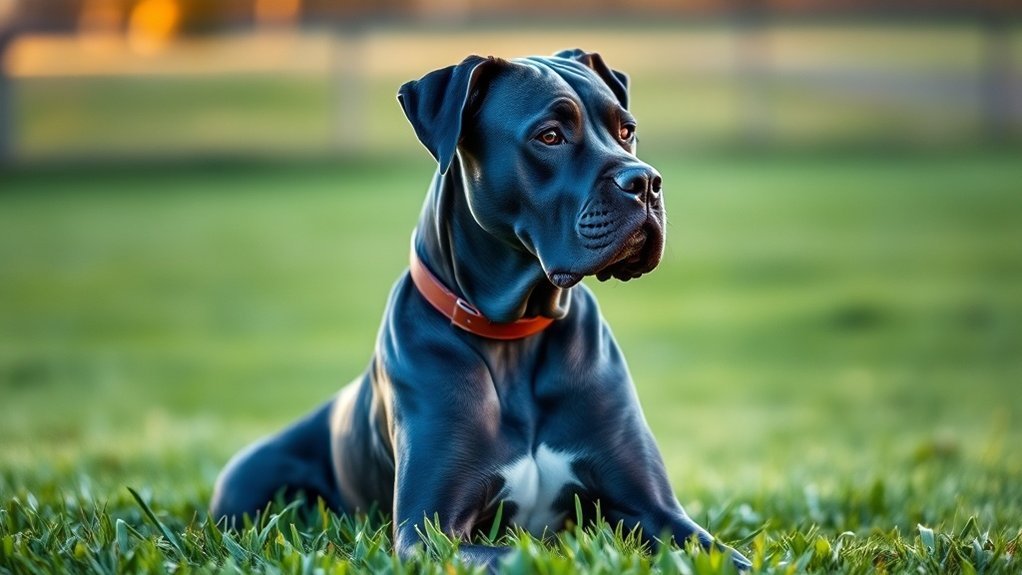
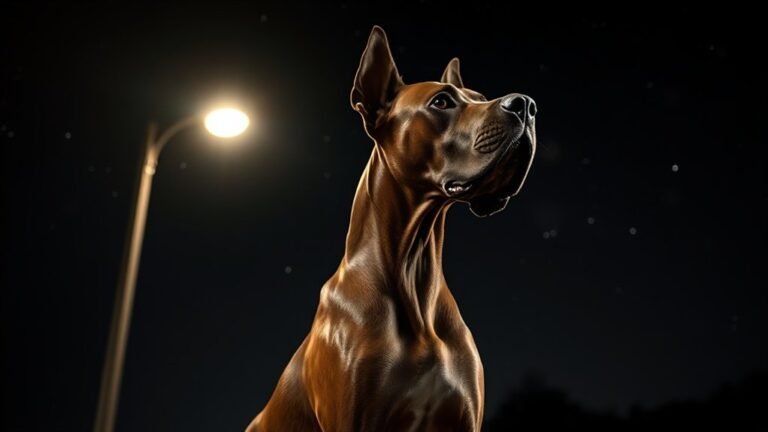
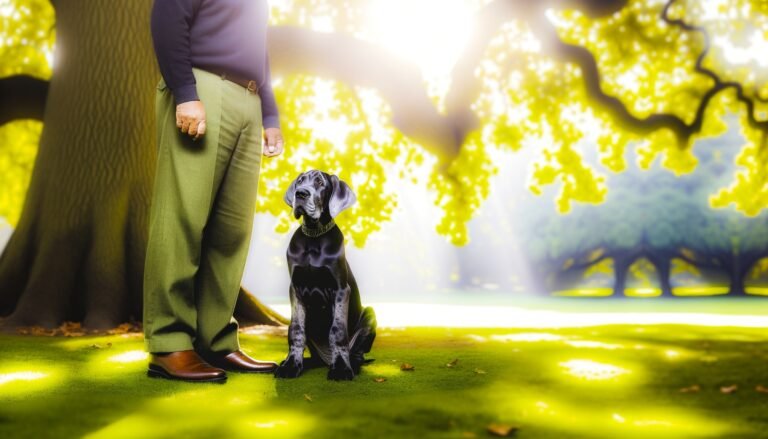
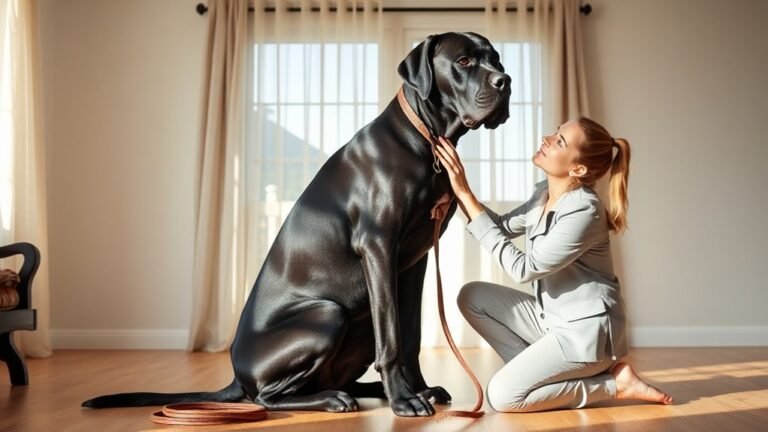
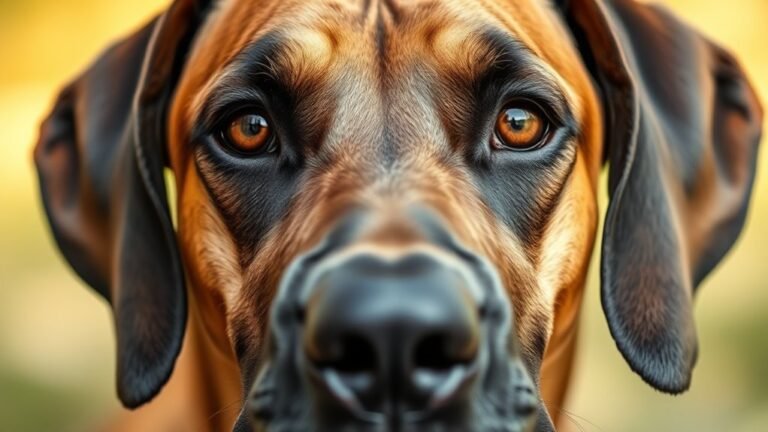
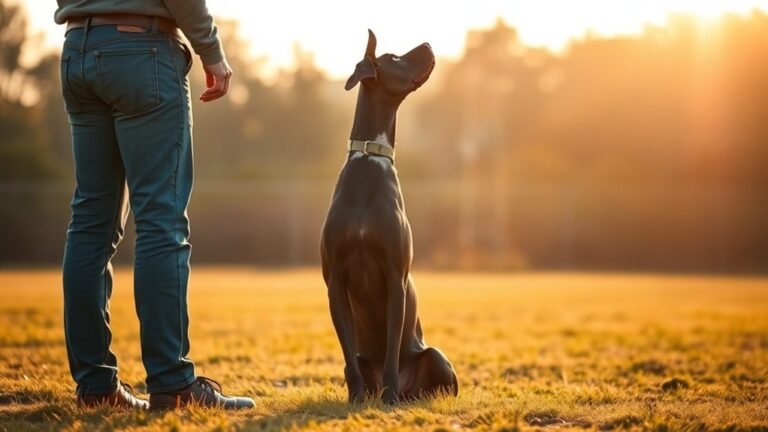
35 Comments